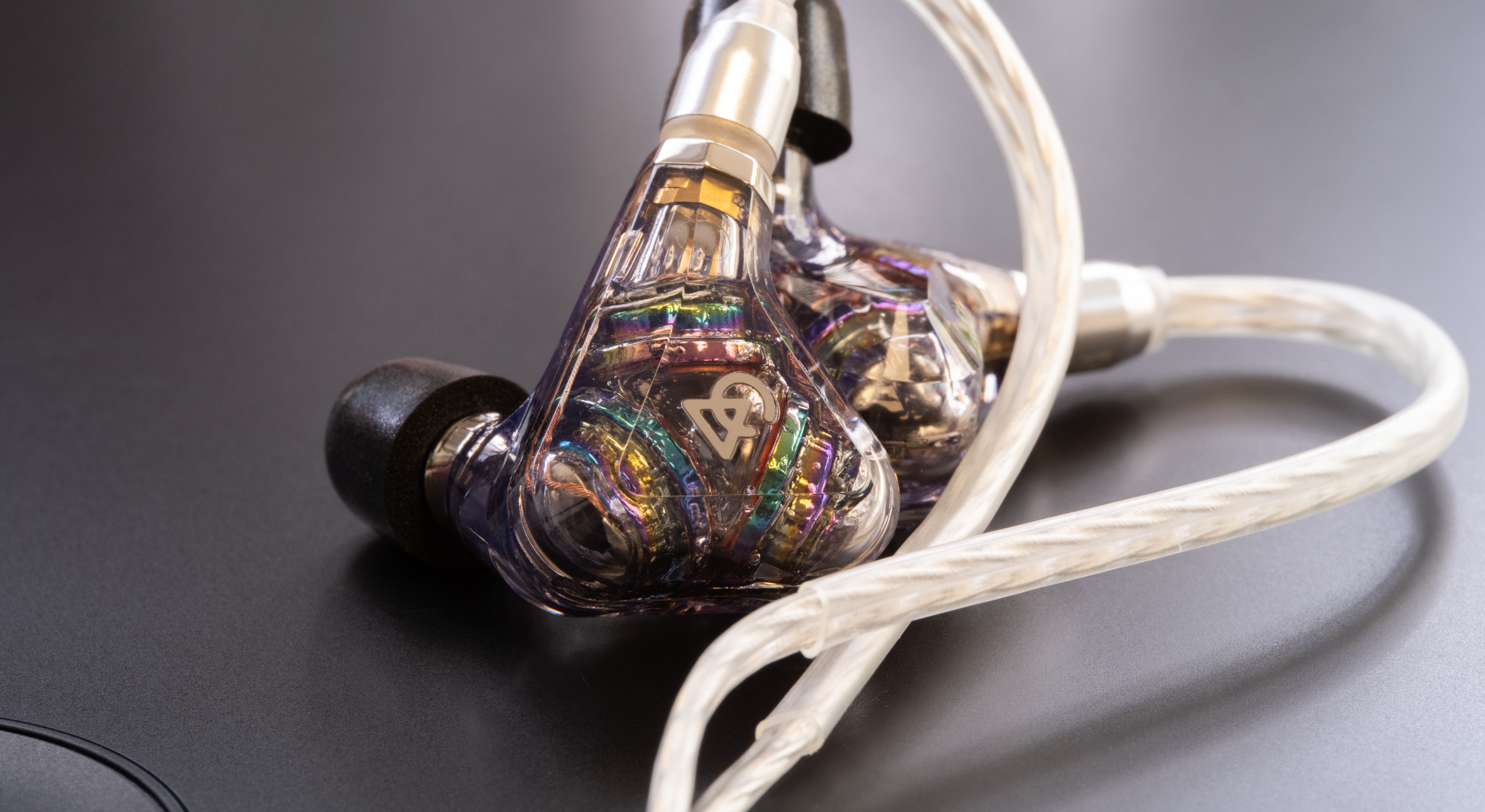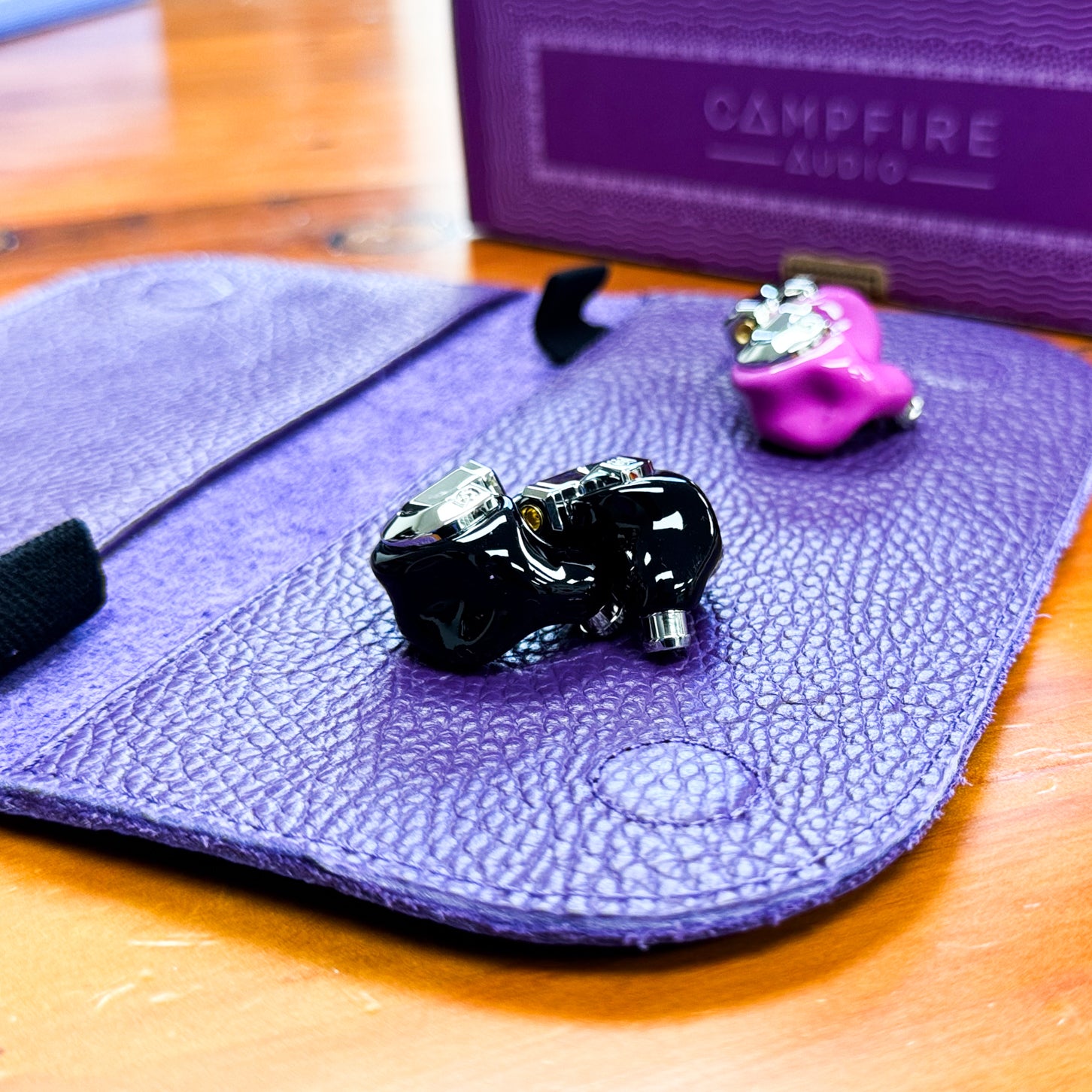
Welcome to the World of HiFi Earphones
Premium in-ear-monitors can elevate your listening experience to previously unknown heights and connect you on a deeper level to your favorite music. For those just entering the world of HiFi earphones it can be hard to know where to start, but we're here to help.
Collapsible content
What is an In-Ear-Monitor?
In-ear-monitor, or IEM, is the name used by professionals and audiophiles to refer to earphones that sit in the ear canal, versus on-ear or over-ear headphones. Another key feature is that, unlike many "earbuds," IEMs create an earplug-like seal in the canal to prevent any of the frequency range from escaping. The improved seal provides superior isolation and a perception of space known as "soundstage."
IEMs are used for a wide range of applications that include both audio professionals and bona fide audiophiles. From pro-audio needs - like live monitoring and studio production - to simply bringing out the most in your everyday music listening. Campfire offer's a wide spectrum of sound profiles, offering different experiences, and lending themselves to certain preferences. Taste in music is incredibly subjective, so we do our best to offer earphones that cover many tastes and experiences.
What is a driver?
A crucial aspect of an IEM is its internal compliment of drivers, which are essentially small speakers. There are a range of driver types and a number of ways in which to apply them.
Balanced Armatures: Balanced armatures are small enclosures that feature a reed (or reeds) suspended in a magnetic field. As the electrical signal flows in and manipulates the magnetic field the armature vibrates creating air pressure changes that we perceive as sound.
Balanced Armatures are small and move very quickly; this makes them great at producing technical, detailed, and highly resolving sound.
Dynamic Drivers: Dynamic drivers on the other hand, use what is known as a voice coil rather than a suspended armature. The voice coil oscillates as the electrical current flows in, which in turn puts motion into the diaphragm, creating sound waves. Balanced armatures offer a compact, space-saving design that is invaluable in creating a low-profile, comfortable earphone.
Dynamic drivers excel at producing and impact, warmth, and texture, and are very capable at creating wider, deeper-reaching bass response.
Planar Magnetic Drivers: Long-used in over-ear headphones, only recently has planar tech evolved to be small enough to feature in IEM applications. Planar drivers are unique in that they are both large, and move very quickly, so they can produce incredible high-end detail, as well as rich, satisfying bass response.
Planar drivers also create a different waveform style than traditional armatures or dynamic drivers, the nature of these drivers gives them a unique timbre or sound character in comparison to other driver types.
Shaping Sound with Driver Application
At Campfire Audio we strive to highlight the strengths of various driver technologies, create new and exciting sound signatures, and advance technical performance and bring listeners closer to their music. This informs a considered approach to driver treatment and compliments that necessitates a wide range of applications and special technologies.
Driver application and treatment is as important as the character and quality of the drivers themselves. Drivers are installed in custom-designed tuning chambers and damping values to shape and accent various frequency ranges. Careful attention is paid to phase interaction, driver crossover, and a range of variables that can affect performance.
Some drivers are applied as full-range drivers, meaning they produce the full frequency spectrum the listener hears. Other drivers are tuned to focus on specific frequency bands general falling along the lines of low, mid, and high.
Again, here there are different strengths and weaknesses; for instance, a single, full-range driver can create a signature that is very cohesive from low to high, each band having similar textures and timbre. However, multi-driver configurations allow more colors and textures to be applied to various frequency bands. Pairing the warmth and thickness of a bass-focused dynamic driver, with the crisp detail of a balanced armature for the highs, for example. To create a unified sound signature in our multi-driver earphones, Campfire emplys a range of techniques to blend driver performance.
Differences Between Models
Campfire Audio takes a unique outlook on how we create variety within our product line. Each Campfire IEM seeks to provide a special experience across a wide spectrum with the goal of having something (or many things) for everyone.
From crisp, airy, bright signatures, to warm, rich, bombastic signatures, and many points and combinations in between, Campfire has your bases covered.
Cables
Termination:
Different audio players can accept different-sized terminations of cables: 2.5mm, 3.5mm, 4.4mm. Our standard cables are your typical "aux" size and shape, which is the 3.5mm termination. At the other end are the connectors that will attach to your IEMs themselves. All of our IEMs use MMCX connectors.
4.4mm and 2.5mm terminations use a 'balanced' signal, which has individual grounds for each right and left stereo channel. Many users prefer to use a balanced signal, often found on digital audio players (DAPs) or digital to analog converters (DACs). 4.4mm termination has become the primary form of using a balanced signal.
Metals:
The metals that make up the wiring of your cable can affect the sound in subtle ways. A copper cable is going to be warmer and emphasize low to mid frequencies a bit more than the highs. A pure silver cable is going to be brighter and emphasize the highs. A silver-coated, copper cable is going to bring some of the best of both worlds of these materials. Silver-plated copper is featured in our Smoky Litz cable, which comes standard on many (but not all) of our models. Finally, a cable with pure gold wiring is going to offer superior performance across the entire frequency spectrum.

Get in touch!
Have more questions? We'd love to chat! Feel free to contact us at support@campfireaudio.com
